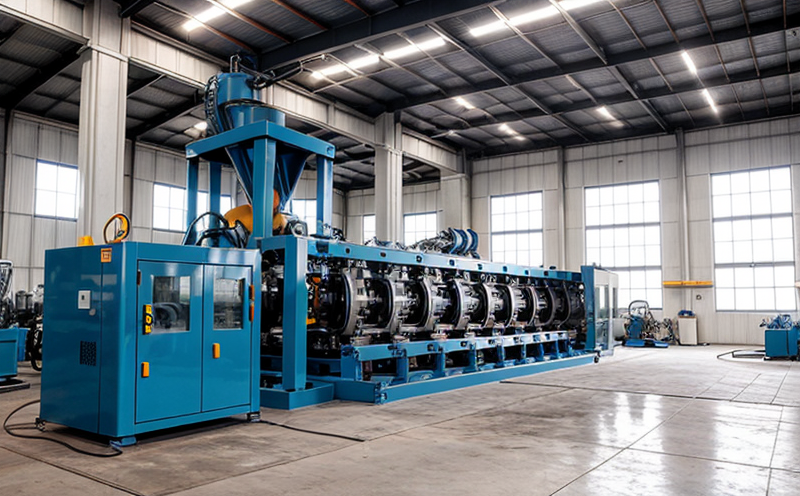ASTM E606 Strain Controlled Fatigue Performance Testing of Equipment
The ASTM E606 standard is a crucial method for evaluating the fatigue performance of machinery and equipment under strain-controlled conditions. This test is essential in ensuring that critical components, such as gears, bearings, and shafts, can withstand cyclic loading without failure. The primary objective is to determine the fatigue limit or endurance strength, which represents the maximum stress level at which a material can endure an infinite number of cycles without fracture.
Strain-controlled testing focuses on measuring the strain in the specimen rather than the applied load. This approach allows for more precise control and better understanding of how materials behave under cyclic loading conditions. The test is typically performed using specialized fatigue testers that apply controlled strain to the specimens at a constant rate until failure occurs.
Specimens are carefully prepared according to ASTM E606, which specifies detailed procedures for sample preparation, including dimensions and surface finish requirements. The testing process involves subjecting the specimen to alternating stress cycles until it fails due to fatigue. During testing, engineers monitor key parameters such as strain amplitude, frequency of loading, and temperature.
| Parameter | Description |
|---|---|
| Strain Amplitude | The range of strain applied to the specimen during each cycle. |
| Frequency | The number of cycles per unit time. This is typically controlled within a specific range relevant to the application. |
| Temperature | The environmental conditions in which the test is conducted, often reflecting real-world operating environments. |
Testing results are analyzed using statistical methods to ensure reliability and repeatability. Compliance with ASTM E606 ensures that equipment manufacturers can demonstrate the robustness of their products under cyclic loading conditions, which is particularly important in industries such as aerospace, automotive, and power generation.
- It helps identify potential weaknesses early in the design process.
- The results support continuous improvement initiatives by providing clear failure modes.
- ASTM E606 ensures that products meet international safety standards.
- This testing method is pivotal for ensuring product longevity and reliability.
Eurolab Advantages
At Eurolab, we pride ourselves on delivering comprehensive and accurate ASTM E606 strain controlled fatigue performance testing services. Our state-of-the-art facilities are equipped with advanced fatigue testers capable of simulating real-world loading conditions accurately.
- We offer rapid turnaround times to meet your project deadlines without compromising the quality of our tests.
- Our team of experienced engineers provides expert analysis and reporting, ensuring that you receive actionable insights into the performance of your equipment.
- Our compliance with ASTM E606 ensures that all testing adheres to internationally recognized standards, providing confidence in the results.
- We offer competitive pricing without sacrificing on quality or service. Our commitment to customer satisfaction is unmatched.
Environmental and Sustainability Contributions
The ASTM E606 strain controlled fatigue performance testing plays a vital role in enhancing the durability and reliability of equipment, which can lead to significant environmental benefits. By identifying potential weaknesses early in the design process, manufacturers can optimize component design for strength and longevity. This approach reduces waste by minimizing the need for frequent replacements due to premature failure.
- Reduced material consumption through optimized designs.
- Decreased energy usage during manufacturing processes.
- Promotion of longer operational lifespans, reducing the frequency of maintenance and replacement.
- Enhanced resource efficiency by ensuring that components can withstand harsh operating conditions without failure.
Use Cases and Application Examples
The ASTM E606 strain controlled fatigue performance testing is widely used in various industries where equipment must endure cyclic loading. Here are some specific use cases:
| Industry Sector | Specific Application Example |
|---|---|
| Aerospace | Testing of turbine blades to ensure they can withstand the cyclic loading during engine operation. |
| Automotive | Evaluation of gearboxes and axles for their ability to handle repeated stress cycles in various driving conditions. |
| Power Generation | Assessment of steam turbines to ensure they can operate efficiently under cyclic loading without failure. |





